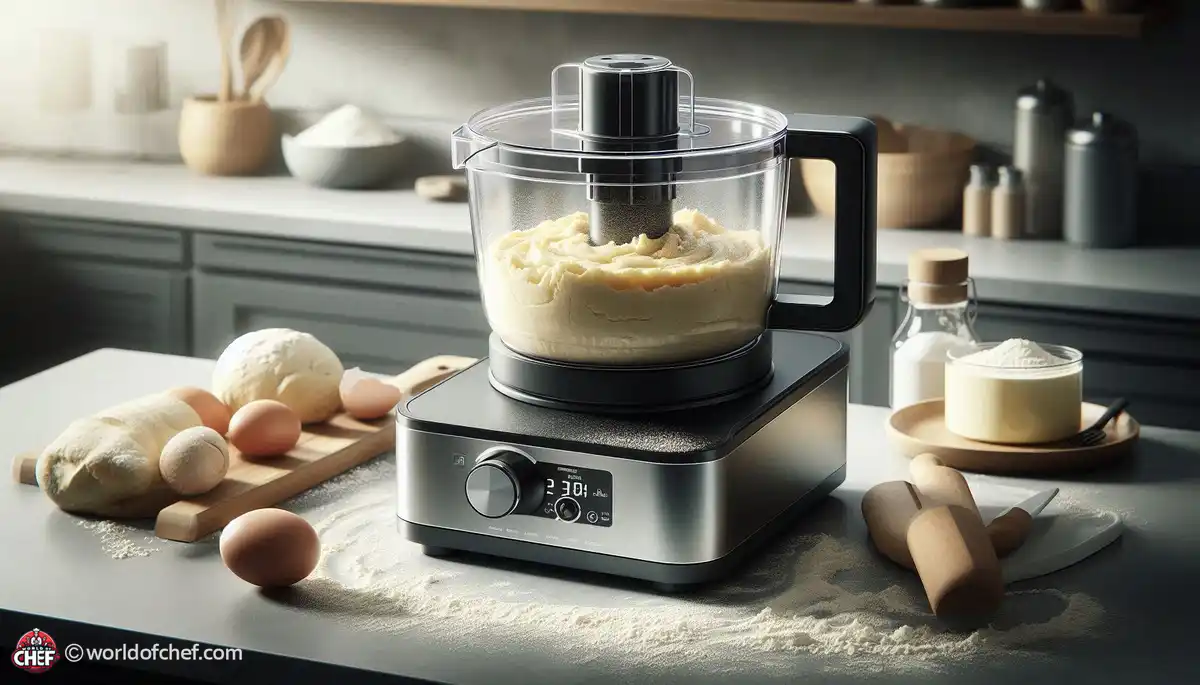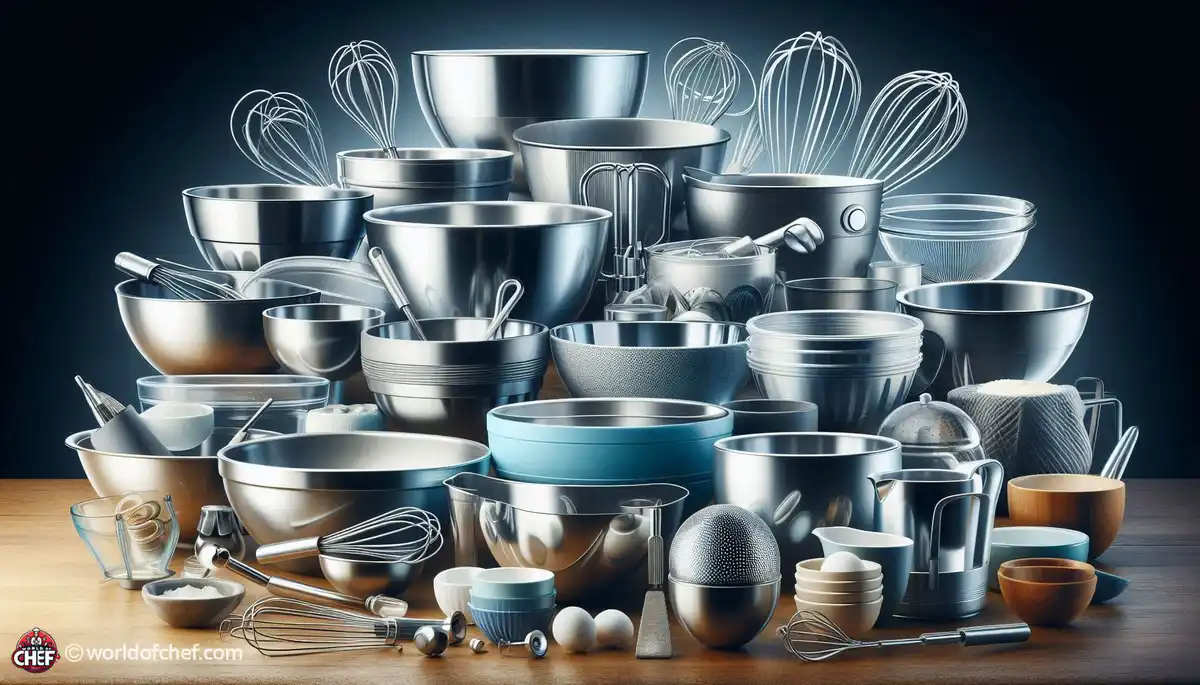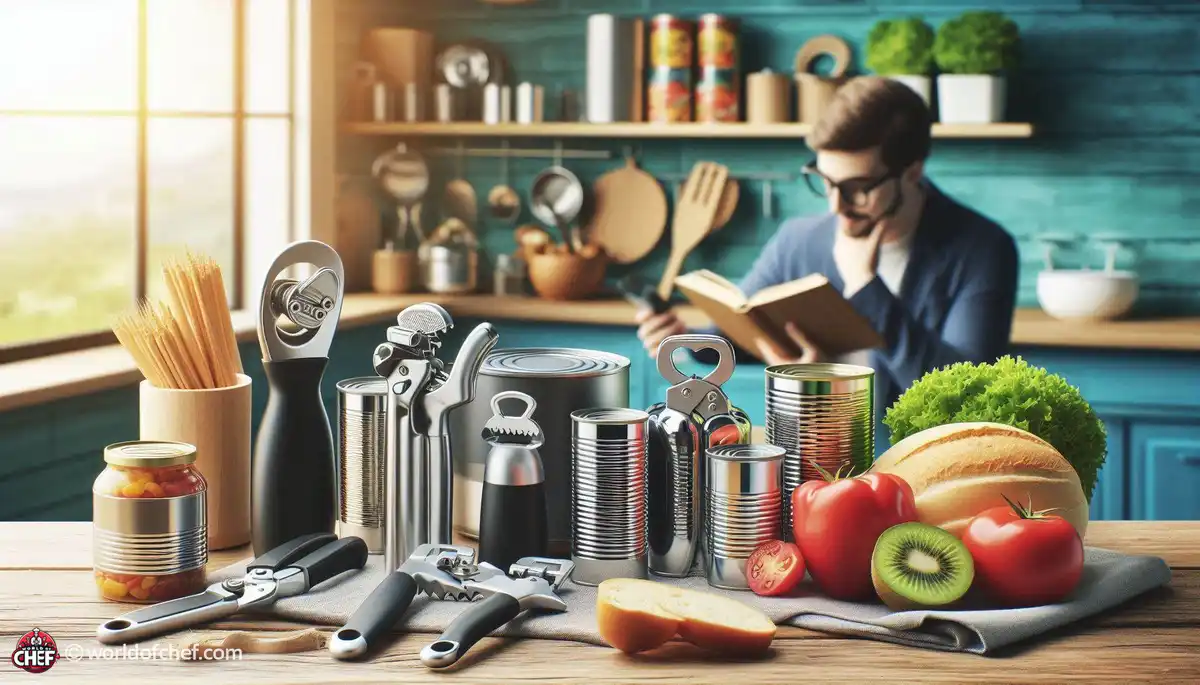
Can Food Processors Handle Dough Mixing Effectively?
Louis Saul - Jan 15, 2025 - 11 min read


Generally, the right peeler does make a difference. And the right peeler determines whatever it is you do about fruits, vegetables, garnishes, and much else besides. This article offers several types of peelers and their features with great advice on how to determine the best peeler according to your needs in your kitchen.
These are probably the most common varieties seen in the kitchen. These generally consist of a straight-edged blade and handle by which one can comfortably grip the peeler. This peeler is generally used with most fruits and vegetables and is, therefore, one of the essentials to have in any kitchen. A standard peeler really will amaze you on how easily it goes across a surface, taking away the peel without wasting so much flesh underneath.
Peeling a standard vegetable feels intuitive, and by praxis, you become best friends with the peeler itself. Whether peeling spuds for that perfectly rich mash or carrots for this fresh salad, one does not know, really? Just remember that consistency equals even peeling; to get the most of using it, always have sharp blades.
Y-peelers consist of a blade located at the bottom of a "Y" shaped handle. This promotes excellent maneuverability, with easier peeling on round or awkwardly shaped products such as tomatoes or kiwis. They are liked by professional chefs because of their speed and efficiency in peeling. The design allows one to peel using less strain on the wrists, which is very handy during long cooking sessions.
Another nice feature about most Y-peelers is that they come with a built-in potato eye remover, so you get that extra functionality with a pretty versatile, handy gadget. They just slide really easy on all surfaces for efficiently peeling. It includes an ergonomic handle and you can naturally allow your hand to do its peeling motions in one smooth stroke which may greatly help you if you are in the kitchen much.
The material for the blade of the peeler is essential when you are choosing a peeler. The most common material people use today is stainless steel. It does not corrode and rust easily, and it makes it more durable and long-lasting. The blade may stay sharper for a longer time using stainless steel, saving you from sharpening and having to spend more time over your meals. The finish also gives stainless steel a shiny gloss on the kitchen tools.
Moreover, the stainless steel is nonreactive, so it wouldn't alter the flavor of your food, and all produce is safe to prepare with. This is yet another reason why many top-of-the-line peelers employ stainless steel blades, meaning it's a good bet for any home cook looking to take their kitchen game a notch higher.
The handle of your peeler also matters significantly. The plastic handles are lightweight but often come in various colors, and they do lack the grip and comfort as a well-designed metal handle is able to provide. As a metal handle is most durable and can stand day-to-day usage, its grip is also more stable, and you will hardly have the fear of slippage while peeling.
The choice usually depends upon personal taste. Some cooking enthusiasts prefer plastic because this provides a warm feeling with the added comfort of doing bulk peeling for more produce. Others want extra strength, which may only be achieved through metal handles. You will have to pick what you feel good gripping in your hand as sometimes this will make the overall peeling process much smoother.
Always pick one that looks comfortable on the hand to peel in ease without tiring out at your own pace, while feeling fresh. Always go for peeler's with cushions in the handle or grip areas, hence well-conforming to one's palms when gripping with their palm for easy action. Especially to peel numerous fruits and vegetables.
Pay attention to the weight of the peeler as well. A tool that is too heavy may lead to fatigue, but a tool that is too light may lack the control you need. Ideally, you want a peeler that feels balanced, allowing you to maneuver without strain. If possible, test some in-store to find that fit that really makes cooking feel different.
The motion a peeler uses to go through the skin of the produce can affect your efficiency. Some peelers are made for a forward motion, while others allow for a back-and-forth action. Depending on the shape of the vegetable or fruit, you may find one motion easier than the other.
A good peeler should glide across with no sticking. If it catches or requires too much pressure, then it probably is not the right tool for you. Always comfort and control are paramount. You want a peeler that feels natural in your hand, allowing fluid, effortless motion while you work.
Juliehn peelers are specifically useful for making long, slender strips of vegetables. There are times when you simply need to make uniform-shaped pieces for salads or to garnish a dish-letting you do little work. This can significantly enhance your presentations, letting your dishes look appealing through their presentation.
Using a julienne peeler is very straightforward; you just run it along the surface of the vegetable, and the result will be delicate strips. It can be quite an excellent addition to the arsenal of your kitchen especially if you like creating some dishes that require a little finesse. If you love experimenting with fresh salads or garnishing, get a julienne peeler for your collection.
Corn peelers are tools designed to efficiently remove kernels from the cob. Using a corn peeler saves time and leaves the whole process much cleaner than trying to do it with a knife. What you are looking for is a sharp, curved blade that curves to follow the shape of the cob.
Although not an indispensable kitchen aid, a corn peeler is quite helpful when fresh corn is in season. If you love fresh corn on the cob or cook recipes that contain corn, having this tool can really make your preparation process more streamlined, letting you focus on cooking and enjoying your meal.
Proper maintenance ensures that your peeler does not malfunction. Sharp blades make peeling easier and safer. With a dull blade, pressure increases the risk of a slip and, therefore injuries. Most peelers are sharpened at home. Check the manufacturer's recommendations for best practices.
Consider investing particularly for sharpening your peelers. Then, by following this approach, the equipment in the kitchen could easily be kept clean; then, the equipment always has a readiness to engage its users in peeling actions. It is only in the hands of good upkeep that the peeler would last for years since even a chef at home deserves such a good instrument for peeling.
Proper cleaning and storage will make sure your peeler will last long. For each use, wash the peeler using warm soapy water then dry it. Do not soak it in water because this may lead to rust especially if it has a metal handle or blade.
On the storage side, place the peeler in its special drawer or utensil holder. This way it cannot get lost among your tool collection and the blade from getting damaged accidentally. The protective covers that may accompany a peeler are wonderful if you want to be more careful with your appliance and not expose it.
While it may seem nice to buy a peeler that is cheaper, good quality will pay back when it comes to how many times you use the item. A good-quality peeler can be used in daily life and will retain sharpness, thus there's no need to frequently buy replacements. Higher quality stainless steel and ergonomic design create better usability and comfort that will make your kitchen stay enjoyable.
You'll look at the frequency at which you cook, your priorities concerning your kitchen utensils, and how much time or effort you'd put in peeling when buying one. If you spend too much time peeling or peel frequently, perhaps an investment in a peeler that will save you extra time is warranted. Trusted brands that can assure guarantees or warranties could imply some commitment to quality.
However, there are many good options that are affordable, will get by without leaving a dent in the wallet, and do the job. Most budget choices have decent construction and some good blades, so can be used daily. Review sites and ask people will help find the best bargain.
Be sure to visit local kitchen supply stores and online retailers when buying a peeler. You'd be surprised at the available deals or sales, ensuring you get an excellent tool at a much cheaper cost. There are many ways for you to reach the best balance between the two: the correct peeler is not necessarily going to bleed you dry.
It actually all boils down to which one works best for you, in your kitchen. Consider some time what type of fruits and vegetables you usually peel. Considering you will make a meal when plenty peeling is necessary, it's worth investing in a real peeler so that, by the same token, you will not spend as much time in the end.
Consider comfort and the feel of a peeler in your hand. A good tool is one that feels comfortable and efficient. It makes peeling so easy it becomes a joy rather than a chore. Take your time, and if you have to, don't be afraid to ask other cooks or culinary professionals for advice.
It's a great thing that selecting the appropriate peeler will actually make cooking more enjoyable and efficient besides it. The process might even help you connect with your ingredients in a meditative way and prepare them for some delicious meals. With the right tools in your possession, cooking will become more enjoyable and fulfilling for you, and you'll have many more culinary adventures in your kitchen.

Louis Saul - Jan 15, 2025 - 11 min read

Emery Donley - Oct 26, 2024 - 14 min read

Dennis Hague - Oct 26, 2024 - 14 min read

Jesse Brownell - Oct 26, 2024 - 15 min read